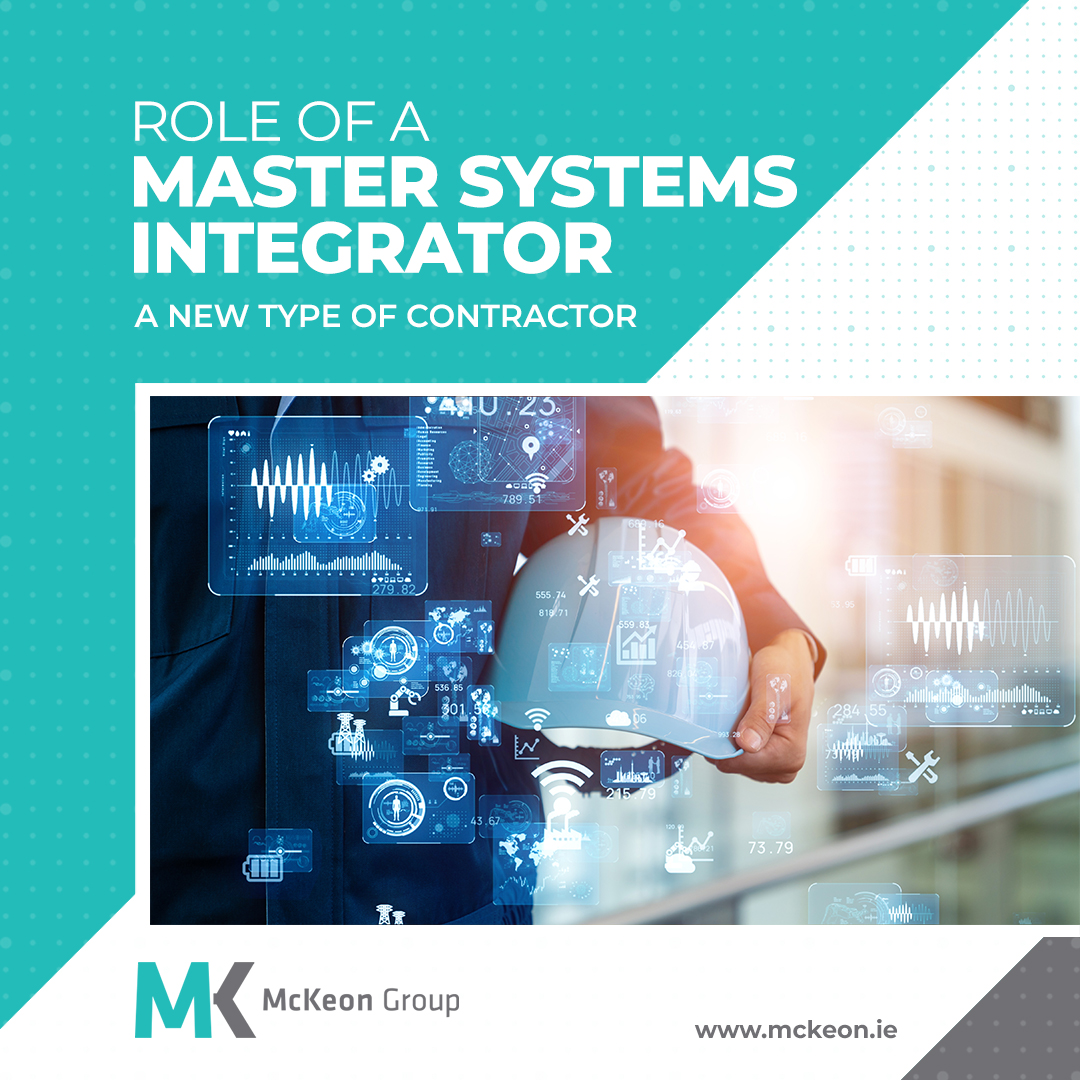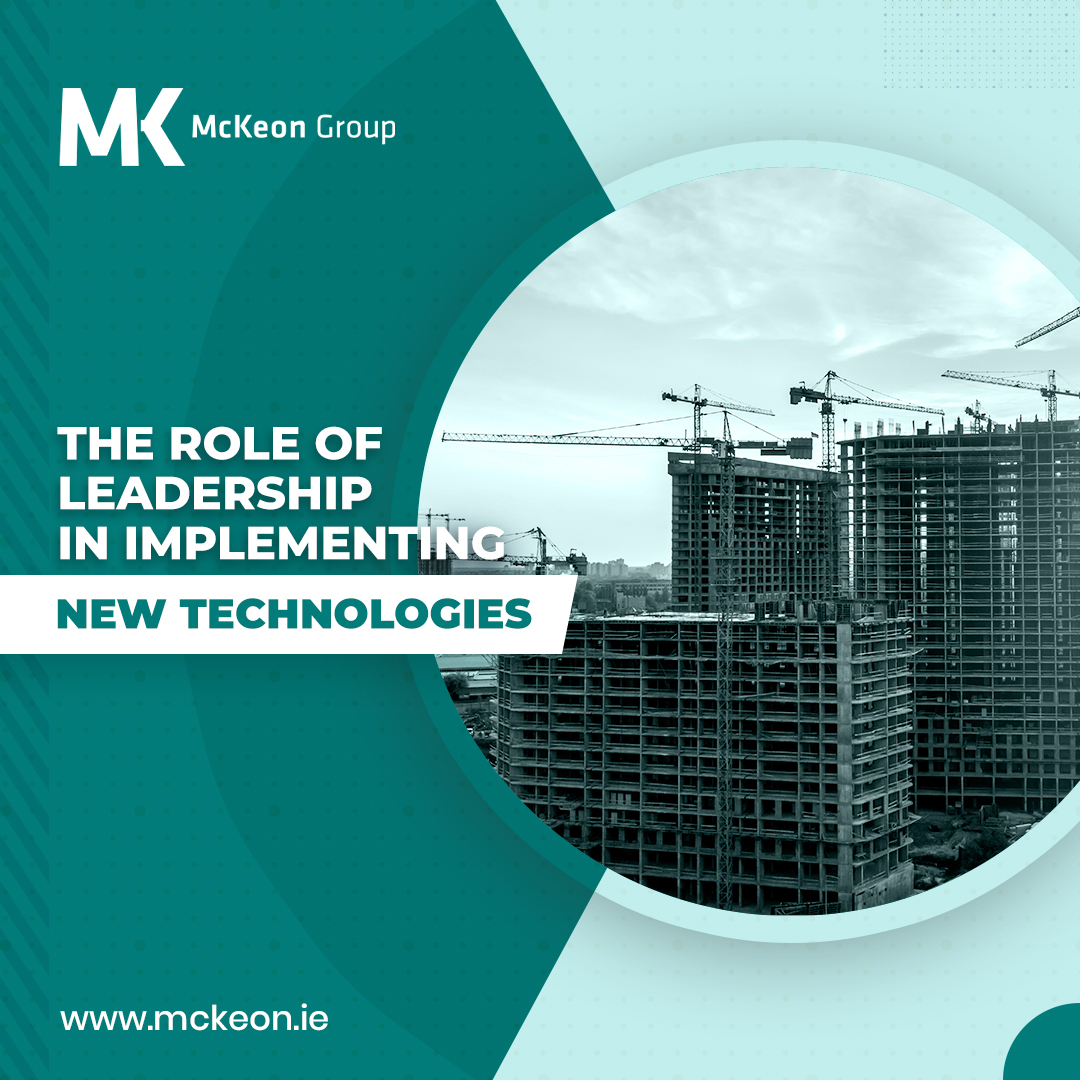Implementing changes to how a business is run is no small task, especially when it comes to construction technology. With many moving parts, ensuring everybody within an organization is on the same page is essential. Despite the disruption that introducing new tech can cause, successful adaptation helps keep up in the competitive construction industry and allows progessive, innovative firms like McKeon to lead.
With the Irish construction industry requiring all the innovation and tech solutions it can get to solve the housing crisis, the pace of change is set to be rapid. Utility Magazine explains in the following article how executive leadership can help ease such tech transitions, making sure technology, people, and business processes work together for success: https://utilitymagazine.com.au/the-role-of-executive-leadership-in-successful-tech-implementation/
TECHNOLOGY
As reiterated in the Utility article, technology should work for your business, not against it – this might sound obvious, but it is not always so clear. With so many tech solutions out there, the process of selecting the right one can often be a team effort. For this reason, it is advised to form an innovation team to evaluate construction technology and decide which should be implemented. As well as those from IT departments, those in the business who would actually use the tech on a day-to-day basis should be on the innovation team.
The team should establish whether the tech helps the business meet its goals and, if so, does it benefit the company more than other available solutions? It is critical to establish a clear set of business requirements, distinguishing between necessities and niceties, thus aiding discussion.
In this process, executive leadership’s role is to empower the innovation team to articulate the business’ vision for the future, keeping the focus on client-centred efficiencies and needs. An effective leader will keep the team’s focus tight, observing when nice-to-haves are being misconstrued as must-haves.
A well-informed team will look for the following:
– Standardisation across projects and divisions
– Look for ways to eliminate duplication of data
– Centralised reporting
– Implement technology to create a more data-driven organisation
With no tech ticking every box, executive leadership needs to be creative in marrying solutions, ensuring business goals are met.
PEOPLE
Effective change management also comes under the purview of executive leadership. Tech or otherwise, making a transition period as easy and smooth as possible for people within an organization is the responsibility of leaders.
According to Prosci, the industry-standard framework for implementing change, modifications to the way business is done begins with awareness and desire. People need to be aware of why change needs to occur; otherwise, they may prove resistant. This should lead to a willingness to enact and accept the change, even supporting its implementation.
Executive leadership plays a key role here in effectively communicating the need for changes. Conveying support for change early and clearly helps managers implement solutions. Leaders can do this by focussing on the company’s long-term vision, explaining how these changes help move towards that.
Getting this message across to everyone within an organization is also the responsibility of executive leadership. It is widely understood that individuals understand the need for change better when the reasons are communicated directly from credible ‘leaders’ – this does not necessarily equate to management level..
Messaging should come in the form of an inclusive meeting, if possible, or a well-written email.
Whether a meeting in person or an email, the following should be addressed:
– How the changes align with the company’s vision
– Addressing problems and opportunities
– Why change now
– The risks
While the communication should be direct from executive leaders, managers can help assuage concerns and reinforce the positive message regarding the changes. Formation of a steering group is recommended for larger organisations, regularly meeting to discuss progress and solutions to areas of concern.
Resistance management techniques are therefore vital for executive leadership should there be push back from managers. While concerns should be listened to and addressed through one-on-ones, it should be clear that the change itself is not optional. Everyone needs to pull together to implement key changes. Celebrating successes will help maintain momentum, encouraging the continued implementation of solutions.
Measuring the implementation of solutions will ensure change is happening at the desired pace. Using metrics such as adoption rates and other performance indicators will allow executive leaders to review progress.
PROCESSES
Construction technology will only solve problems if employed with sound business processes. While construction tech allows a wealth of data in the form of reports and analytics, these insights are only possible if good practices are in place.
Executive leadership can help here by clearly defining processes linked to new tech solutions. These should be clearly defined through the formalised documentation of standard processes.
Again, a steering group should assess milestones and implementation schedules, ensuring change is happening according to plan. Therefore, it is advised to introduce end-user training as this results in better productivity and a higher adoption rate of new tech.
Finally, the above article urges that executive leadership to be at the forefront of change, supporting and implementing change through example. Remaining resolute that the changes are worthwhile and will result in the achievement of long-term goals helps keep an organization positive and ensures the successful implementation of construction tech solutions.
About McKeon Group
Established in 1950 and ISO certified for more than two decades, McKeon Group offers expert construction, fitout and building services. The family-run Group delivers projects, services and maintenance across a range of sectors for State, local authority, FDI and private clients. For more information, contact: www.mckeon.ie



















